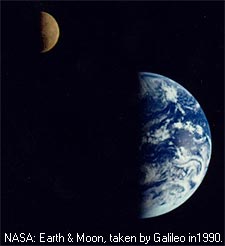Fan Micro Car DIY STEM Kit
$9.99$4.95
 The Moon is gradually receding from the Earth, at a rate of about 4 cm per year. This is caused by a transfer of Earth's rotational momentum to the Moon's orbital momentum as tidal friction slows the Earth's rotation. That increasing distance means a longer orbital period, or month, as well.
The Moon is gradually receding from the Earth, at a rate of about 4 cm per year. This is caused by a transfer of Earth's rotational momentum to the Moon's orbital momentum as tidal friction slows the Earth's rotation. That increasing distance means a longer orbital period, or month, as well.
 'I have deep faith that the principle of the universe will be beautiful and simple.'
'I have deep faith that the principle of the universe will be beautiful and simple.'